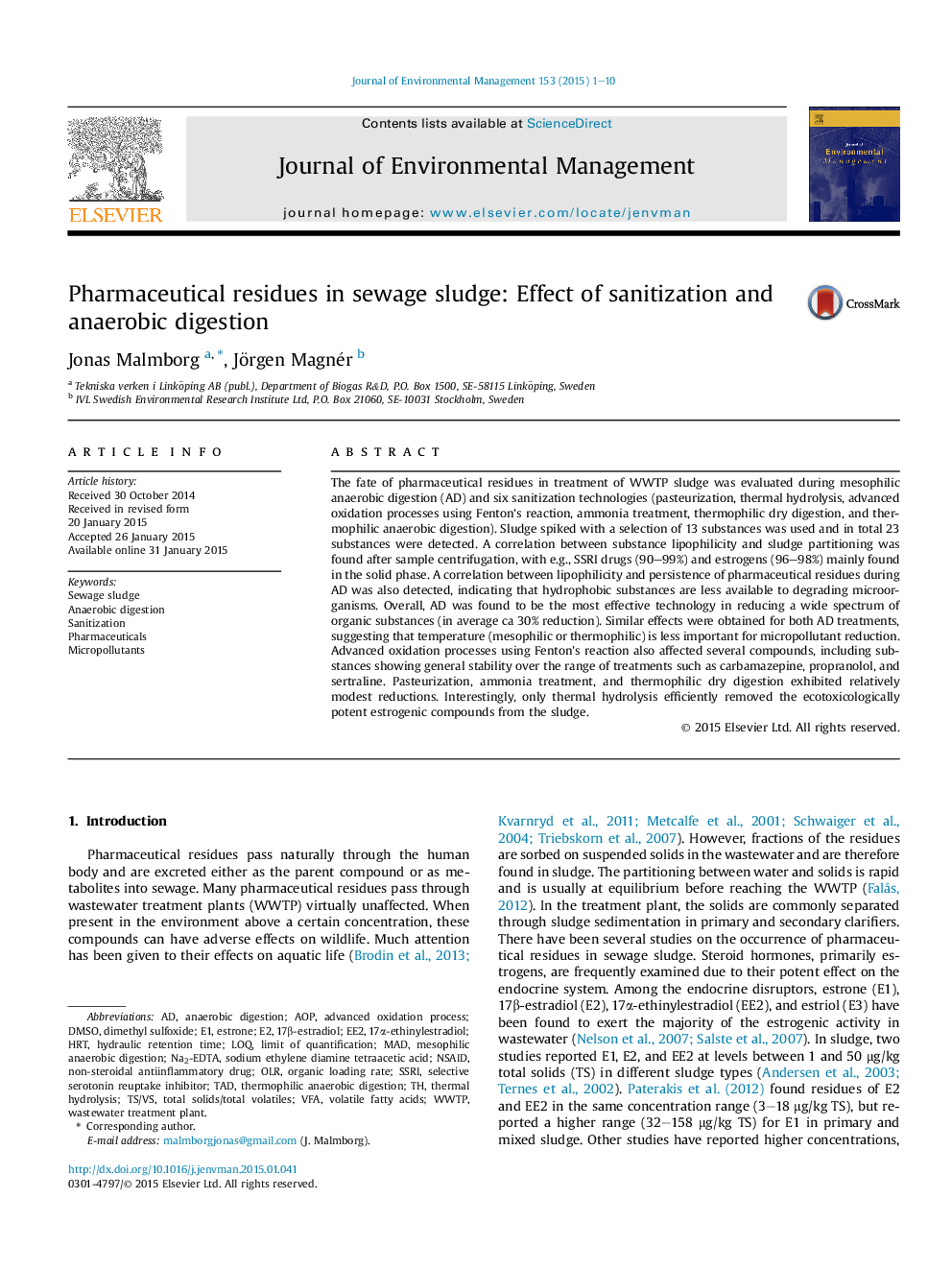| کد مقاله | کد نشریه | سال انتشار | مقاله انگلیسی | نسخه تمام متن |
|---|---|---|---|---|
| 1055620 | 1485259 | 2015 | 10 صفحه PDF | دانلود رایگان |
• 7 sludge treatment processes were compared for effect on pharmaceutical residues.
• AD was the most effective process in reducing a wide spectrum of organic substances.
• Temperature (meso- or thermophilic) was not important for the reduction of residues.
• Thermal hydrolysis efficiently removed the estrogens from sludge.
• There was a correlation between lipophilicity and persistence of residues during AD.
The fate of pharmaceutical residues in treatment of WWTP sludge was evaluated during mesophilic anaerobic digestion (AD) and six sanitization technologies (pasteurization, thermal hydrolysis, advanced oxidation processes using Fenton's reaction, ammonia treatment, thermophilic dry digestion, and thermophilic anaerobic digestion). Sludge spiked with a selection of 13 substances was used and in total 23 substances were detected. A correlation between substance lipophilicity and sludge partitioning was found after sample centrifugation, with e.g., SSRI drugs (90–99%) and estrogens (96–98%) mainly found in the solid phase. A correlation between lipophilicity and persistence of pharmaceutical residues during AD was also detected, indicating that hydrophobic substances are less available to degrading microorganisms. Overall, AD was found to be the most effective technology in reducing a wide spectrum of organic substances (in average ca 30% reduction). Similar effects were obtained for both AD treatments, suggesting that temperature (mesophilic or thermophilic) is less important for micropollutant reduction. Advanced oxidation processes using Fenton's reaction also affected several compounds, including substances showing general stability over the range of treatments such as carbamazepine, propranolol, and sertraline. Pasteurization, ammonia treatment, and thermophilic dry digestion exhibited relatively modest reductions. Interestingly, only thermal hydrolysis efficiently removed the ecotoxicologically potent estrogenic compounds from the sludge.
Journal: Journal of Environmental Management - Volume 153, 15 April 2015, Pages 1–10
